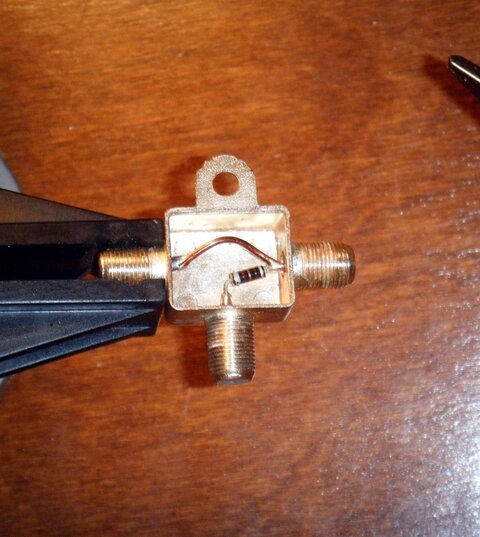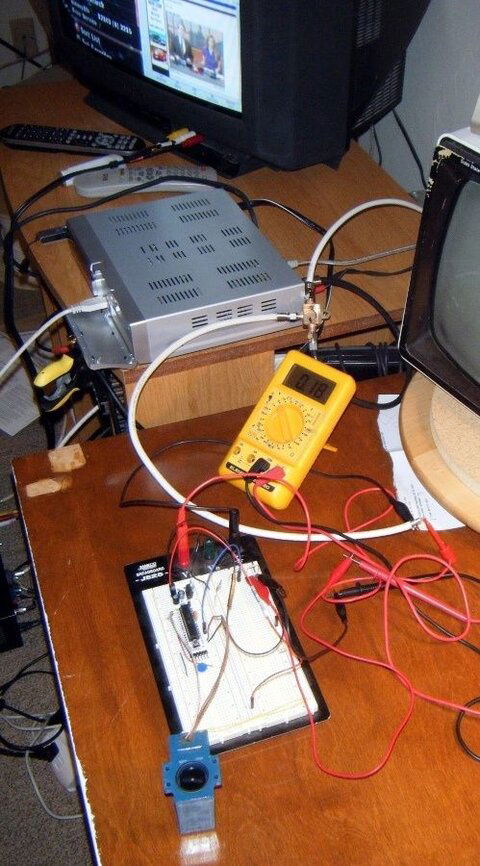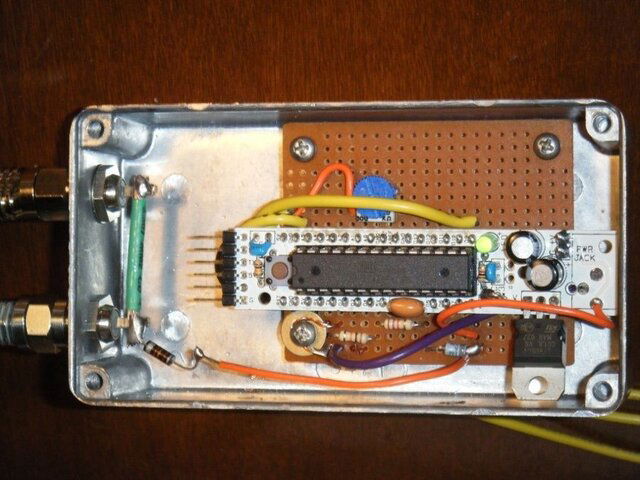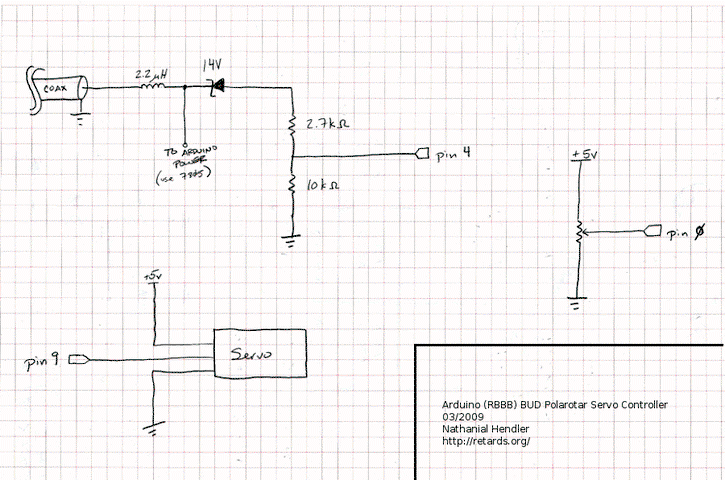I described this project to a buddy at lunch today.
He had recently discovered the
Arduino board, so he suggested it.
Would certainly be suitable for rapid-developing something like this project.
I wanted two LEDs (green & blue?) to indicate 12/18 volts.
Then, two buttons to tune the servo forward or reverse (and maybe an enable toggle switch).
Figured the LEDs could blink off as you press the buttons, to indicate a change of pulse width.
Also, the project needs to be able to remember the settings after a power-down.
So, I wanted an e² chip or feature - the Arduino has that built in.
It's got an analog input, so you could set it to 2v and 4v (whatever) to detect the 12/18 volts on the coax, buffered through the circuit shown above.
Plenty of I/O pins are available.
The board is inexpensive, especially as a one-of-a-kind toy.
I thought about adding a one-line LCD display, but frankly couldn't think of a good use.

20 years ago, I'd have programmed an Intel 8051 chip, in assembly language.
This thing has a high level language development system.
Just something to consider.





